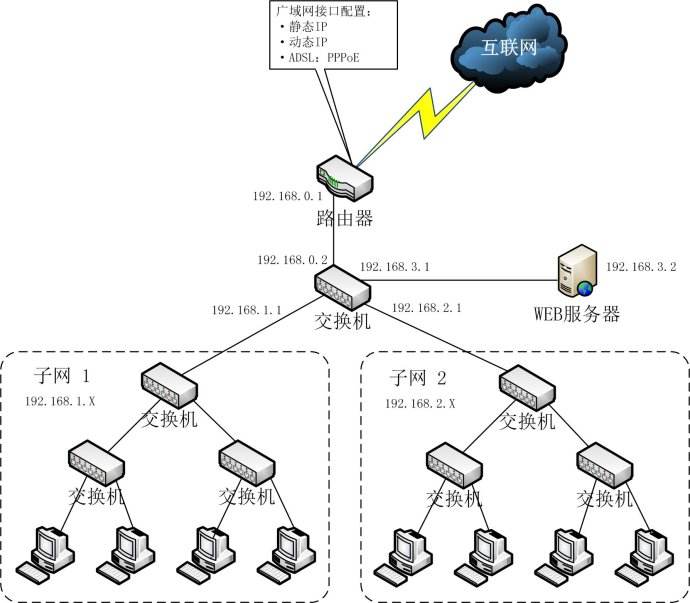The difference between industrial 4G routers and switches
Now is the information age. With the progress of the times, the Internet has become an indispensable part of people's lives. Computer networks are often interconnected by many different types of networks. If several computer networks are only physically connected and they cannot communicate with each other, then this "interconnection" has no practical significance. So usually when it comes to "interconnection," it is already implied that these interconnected computers can communicate, that is, from a functional and logical perspective, these computer networks already form a large computer network, or It is called Internet, but it can also be referred to as the Internet and the Internet.

Routers, switches
Routers, also known as routers, are devices that implement interconnection at the network layer. It is more complex and more flexible than a bridge. The router has stronger heterogeneous network interconnection capabilities. The connection objects include local area networks and wide area networks. The router has two typical functions, namely data channel function and control function. Data channel functions include forwarding decisions, backplane forwarding, and output link scheduling. Generally, they are implemented by specific hardware. Control functions are generally implemented in software, including information exchange with neighboring routers, system configuration, and system management. .
Switch is a kind of network equipment that can identify and forward data packets based on MAC (Network Address Card Hardware Address) identification. Today's switches are classified as: Layer 2 switches, Layer 3 switches, or higher layer switches. Layer 3 switches can also have routing capabilities and are faster than low-end routers. Its main features are: one route, multiple forwarding.

Connecting the networks to each other uses some intermediate devices (or intermediate systems) called relay systems. Depending on the level of the relay system, there are five types of relay systems:
1. The physical layer (the so-called first layer, layer L1) relay system, ie, repeater.
2. Data link layer (ie second layer, layer L2), ie bridge or bridge.
3. Network layer (layer 3, layer L3) relay system, namely industrial 4G router.
4. Bridge bridges and industrial-grade 4G routers Hybrid bridges combine the functionality of bridges and industrial 4G routers.
5. Relay systems above the network layer, ie gateways.
When the relay system is a repeater, it is generally not referred to as a network interconnection because it merely enlarges a network, and this is still a network. High-level gateways are currently used less frequently due to their complexity. Therefore, the general discussion of network interconnection refers to the use of switches and industrial-grade 4G routers to interconnect networks. This article mainly describes switches and industrial 4G routers and their differences.

For industrial 4G routers and switches, the main differences are reflected in the following aspects:
(1) Different levels of work
The initial switch is working at the data link layer of the OSI/RM open architecture, that is, the second layer, and the industrial 4G router is designed to work at the network layer of the OSI model from the very beginning. Since the switch works in the second layer (data link layer) of the OSI, its working principle is relatively simple, while the industrial-grade 4G router works in the third layer (network layer) of the OSI, and more protocol information can be obtained. Level 4G routers can make smarter forwarding decisions.
(2) Data forwarding is based on different objects
The switch uses the physical address or MAC address to determine the destination address of the forwarded data. Industrial 4G routers use different network ID numbers (IP addresses) to determine the address of data forwarding. The IP address is implemented in software and describes the network where the device is located. Sometimes these Layer 3 addresses are also called protocol addresses or network addresses. The MAC address is usually provided by the hardware, and is allocated by the network card manufacturer, and has already been solidified into the network card. Generally, it cannot be changed. The IP address is usually assigned automatically by the network administrator or the system.
(3) The traditional switch can only split the conflict domain and cannot divide the broadcast domain; while the industrial 4G router can divide the broadcast domain
The network segment connected by the switch still belongs to the same broadcast domain. The broadcast packet will be transmitted on all network segments connected to the switch. In some cases, it will lead to communication congestion and security holes. Network segments connected to industrial 4G routers will be assigned to different broadcast domains and broadcast data will not pass through industrial 4G routers. Although Layer 3 and higher switches have VLAN functions, they can also divide broadcast domains. However, sub-broadcast domains cannot communicate and communicate with each other. Communication between them still requires industrial-grade 4G routers.
(4) Industrial-grade 4G routers provide firewall services
Industrial-grade 4G routers only forward packets of specific addresses, do not transmit packet transmissions that do not support routing protocols, and transfer unknown destination network packets, thereby preventing broadcast storms.
Switches are generally used for LAN-WAN connections, switches are bridges, data link layer devices, and some switches can also achieve Layer 3 switching. Industrial-grade 4G routers are used for the connection between WAN and WAN, which can solve forwarding packets between the opposite networks and act on the network layer. They only accept input packets from one line and then forward it to the other line. These two lines may belong to different networks and adopt different protocols. In comparison, industrial-grade 4G routers are more powerful than switches, but they are relatively slow and expensive. Layer 3 switches have the ability to forward packets at the wire speed of a switch, and industrial grade 4G routers have good control functions. So it can be widely used.

in conclusion
In summary, the switch is generally used for LAN-WAN connection, the switch is attributed to a bridge, and it is a data link layer device, and some switches can also achieve the third layer of exchange. Industrial-grade 4G routers are used for the connection between WAN and WAN, which can solve forwarding packets between the opposite networks and act on the network layer. They only accept input packets from one line and then forward it to the other line. These two lines may belong to different networks and adopt different protocols. In comparison, industrial 4G routers are more powerful than switches.
Wax Crayons Oil Pastels Making Machine
Wax Crayons Oil Pastels Making Machine,Oil Pastels Forming Machines,Wax Crayon Making Machines,Semi Auto Crayon Making Machine
gstarstationery , https://www.nbpencilmaking.com